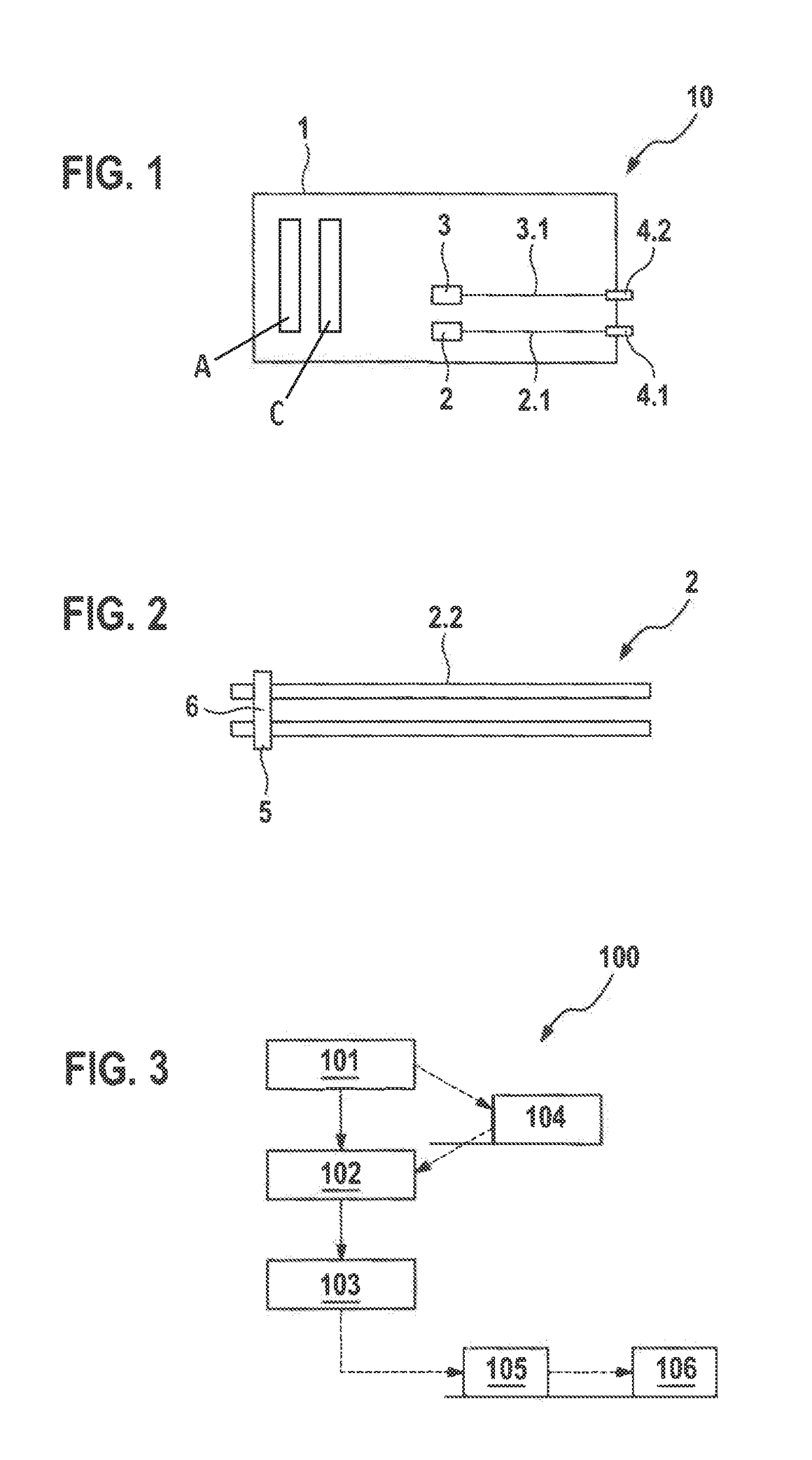Safety test method for determination of critical cell states by internal short provocation
- Summary
- Abstract
- Description
- Claims
- Application Information
AI Technical Summary
Benefits of technology
Problems solved by technology
Method used
Image
Examples
Embodiment Construction
[0023]In different figures, the same features always correspond to the same reference signs, therefore generally the features are only described once.
[0024]FIG. 1 shows a system 10 for testing a battery cell 1 comprising an anode A, a cathode C and at least one conductive heating element / resistive element 2 and at least one sensor 3. The at least one conductive heat element 2 is assembled within the cell for monitoring an internal short circuit. Thereby, the conductive heating element / resistive element 2 can be assembled at any position within the cell depending on the position which should be further examined due to an internal short circuit. Further, a connecting contact 4.1 is assembled at the battery cell 1 providing an interaction between the conductive heating element / resistive element 2 within the cell 1 and the exterior of the cell 1. A wire 2.1 establishes a connection between the conductive heating element / resistive element 2 and the connecting contact 4.1. At the connecti...
PUM
 Login to View More
Login to View More Abstract
Description
Claims
Application Information
 Login to View More
Login to View More - R&D
- Intellectual Property
- Life Sciences
- Materials
- Tech Scout
- Unparalleled Data Quality
- Higher Quality Content
- 60% Fewer Hallucinations
Browse by: Latest US Patents, China's latest patents, Technical Efficacy Thesaurus, Application Domain, Technology Topic, Popular Technical Reports.
© 2025 PatSnap. All rights reserved.Legal|Privacy policy|Modern Slavery Act Transparency Statement|Sitemap|About US| Contact US: help@patsnap.com


